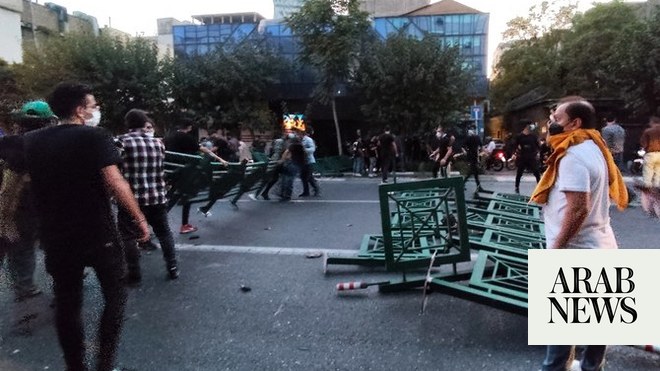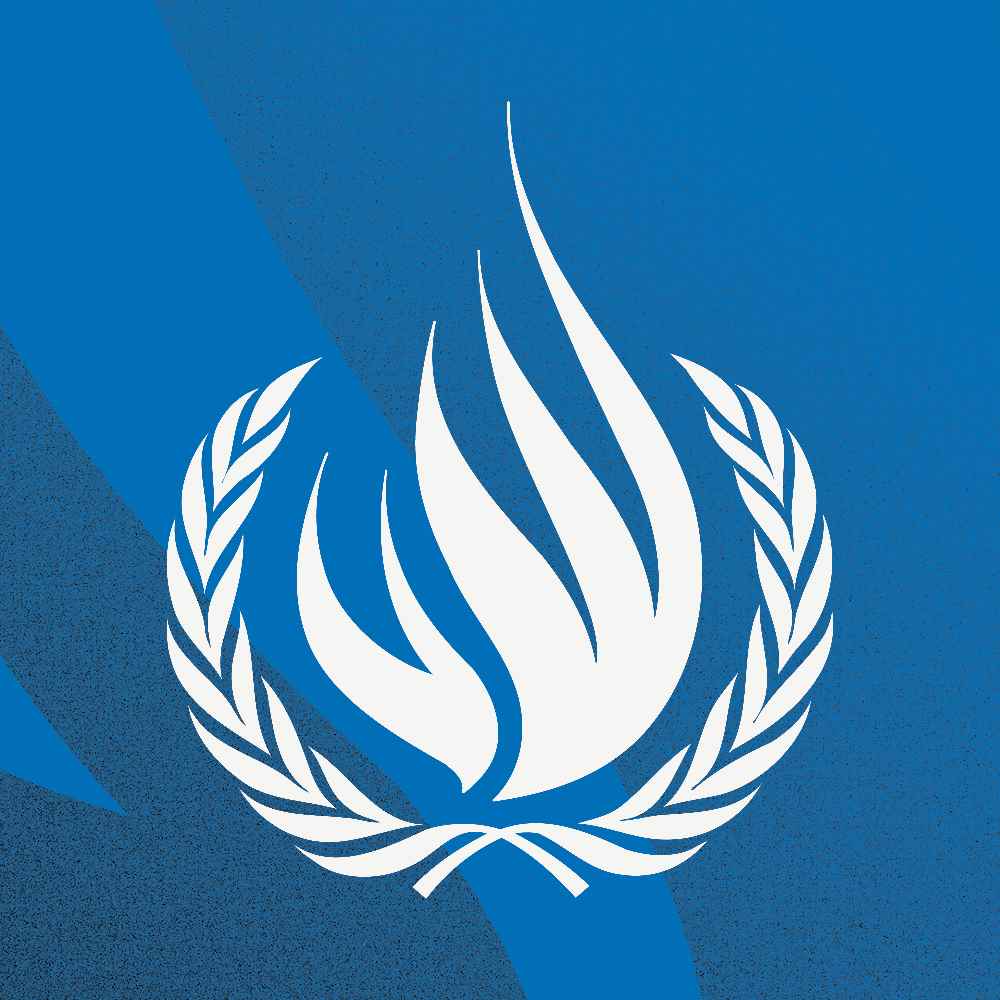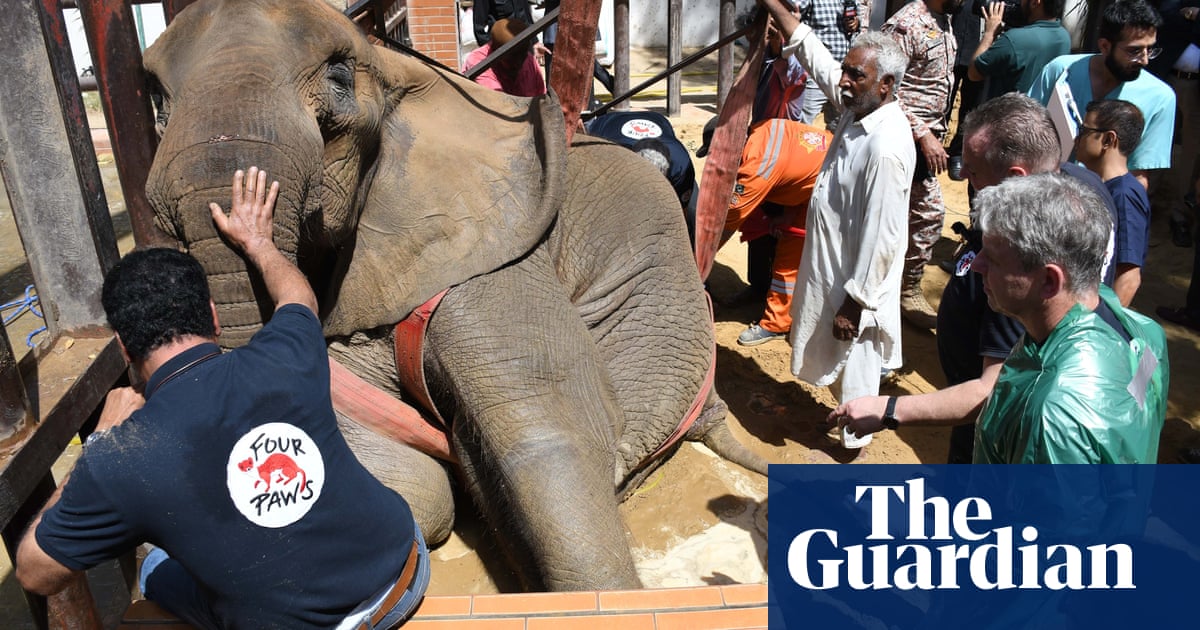
The flames erupted in the kitchen of a fourth-floor flat and spread quickly throughout the building, which was known locally as Moroccan Tower but was home to people of diverse ethnicities, backgrounds and beliefs.
In the days after the incident, which occurred during Ramadan, questions surfaced over the state of the building and whether cost-cutting measures taken during a recent refurbishment overseen by Kensington Council had turned the tower into a “death trap.”
LONDON: A year after a fire tore through Grenfell Tower, the apartment block still looms large over a leafy west London suburb, its blackened shell shrouded in white casing that does little to lessen the somber impact of its stark remains.
Silence hangs in the air around the site, where whole families, once part of the neighborhood’s diverse local community, died in the blaze on June 14, 2017, or suffocated in its smoke.
Seventy-two people were killed, making it the largest loss of life in a residential fire in the UK since the Second World War. The flames erupted in the kitchen of a fourth-floor flat and spread quickly throughout the building, which was known locally as Moroccan Tower but was home to people of diverse ethnicities, backgrounds and beliefs.
Some were asylum seekers, who had come to the UK from Syria, Sudan, Afghanistan and elsewhere in search of safety, only to perish in a tragedy that sparked a mass outpouring of grief, causing the country to examine its claims to multiculturalism and consider its attitudes toward class, religion and race.
The first victim to be named was 23-year-old Mohammed Al-Hajj Ali, a Syrian refugee, who fled Daraa in southern Syria three years previously and sought safety in the UK with his two brothers. Ali stayed in touch with his brother Omar, who managed to escape the burning building, up to the end.
His final words, around 5am, were: “The smoke is getting in, the smoke is getting in, we are going to die, we are going to die.”
FASTFACTS
72 people died in the fire.
One year on, passersby try to avert their eyes as they drop children off for swimming sessions in the nearby leisure center or attend class at the academy next door.
On the boarding put up to fence off the tower, where the investigation continues, people have scrawled messages and posted photographs of those who perished in the blaze. “Hamid 16th floor” is written in pen below a heart-shaped Grenfell tube sign pinned with cutouts bearing personal messages to lost loved ones.
Other signs, strung from railings by the road or tucked between flowers and teddy bears outside churches in the affluent neighborhood, demand “justice for Grenfell” — for the victims and their families who are still waiting for answers.
Among them were a large number of Muslim residents, some of whom were the first to warn sleeping occupants when they smelt smoke and rushed from door to door, alerting an entire floor to the danger while there was still time to flee.
Others, including five members of the El-Wahabi family, five members of the Hashim family and six members of the Choucair family, were trapped inside.
In the days after the incident, which occurred during Ramadan, questions surfaced over the state of the building and whether cost-cutting measures taken during a recent refurbishment overseen by Kensington Council had turned the tower into a “death trap.”
As the first hearings forming part of an independent public inquiry into the circumstances surrounding the fire got underway, Danny Friedman, a lawyer representing some of the survivors, said the building works were “obviously dangerous, reprehensible and contrary” to regulations.
Fire safety experts contributing to the inquiry have concluded that the combustible cladding, widely cited as a major factor in causing the fire to spread so quickly, was “substantially to blame for the tragedy.”
To date, none of the corporate companies involved in supplying materials for the refurbishment, including Celotex, which provided insulation for the cladding, or construction firm Rydon, the contractor for the project, have accepted responsibility.
Survivors have said they raised concerns with the council prior to the fire, citing fears about the placement of boilers and gas pipes, the lack of alternative escape routes and the absence of a building-wide sprinkler or alarm system, but were “brushed away.”
The community is “very angry and frustrated,” Lotifa Begum, global advocacy coordinator at Muslim Aid, told Arab News. “There has been a history of neglect of that community, of the migrant community in particular … people will continue to look back on this tragedy and think it could potentially have been prevented.”
She recalled arriving on the morning of the fire to see “a load of distressed women” refusing to break their Ramadan fast for fear their prayers would not be answered.
Muslim Aid went on to join forces with other groups to create the Grenfell Muslim Response Unit, which helped to find Islamic clothing for some of the women who had lost everything in the fire and provided halal food to a number of those affected.
Many of the victims are still stuck in temporary accommodation and complaints have arisen over the make-up of the inquiry panel. In a letter to prime minister Theresa May last week, London mayor Sadiq Khan described the treatment as “at best, inconsistent and chaotic; and at worst, inhumane.”
Suggestions that the ethnic make-up and socio-economic status of the building’s residents were behind the council’s apathy have featured prominently in the ongoing inquiry.
“The people in Grenfell Tower were ignored in a large part because of their race, their ethnicity and their religions,” said Zita Holbourne of BME Lawyers for Grenfell, an umbrella organization for black and minority ethnic groups and individuals.
On a sunny weekday afternoon between prayer times this month, Al-Manaar mosque in north Kensington was almost empty. But staff could still vividly recall the chaos this time last year, when victims and volunteers flooded through the doors, turning the center into a refuge from the fire engulfing the tower at frightening speed nearby.
At first it seemed like the flames, which erupted shortly before 1am, could be brought under control, but by daylight the scale of the tragedy became clear and “it was obvious that people needed support,” said Abdulrahman Sayed, chief executive of the mosque.
At 6am on the morning of the fire he gave the order to “open the door and welcome anyone, regardless of faith” before rushing to the scene, his car loaded with water and dates for those waiting anxiously to hear news of neighbors and loved ones still trapped inside. Returning to the mosque later on, he found it “inundated.”
One year later, as bereaved families and friends paid emotional tributes to the victims of the fire during a series of commemorative hearings recently, those present listened to a recording of Kabul-born Mohamed Neda’s final phone message, uttered in Dari before the flames took over.
“Goodbye,” he said. “We are now leaving this world. Goodbye. I hope I haven’t disappointed you. Goodbye to all.”












